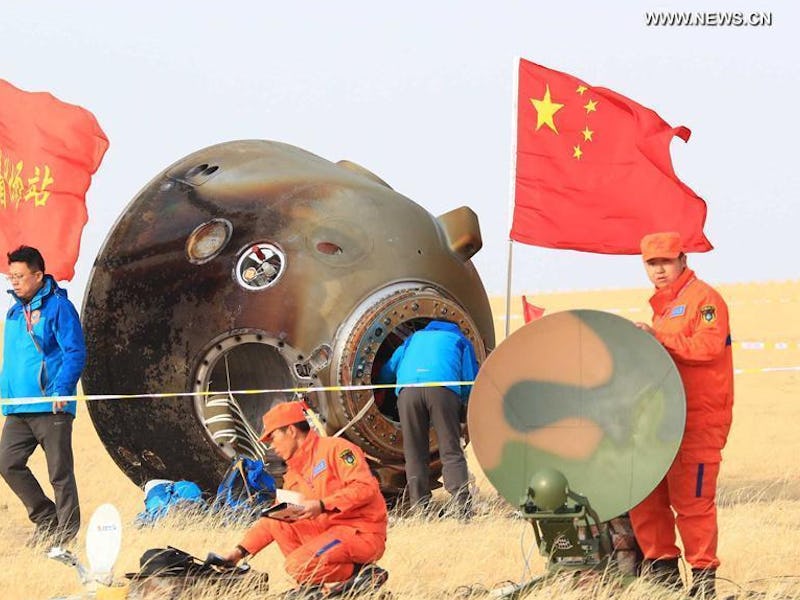Following a month-long mission, two Chinese astronauts returned to Earth, completing the country’s longest mission yet. The crew departed the Tiangong-2 space station on Thursday and touched down under parachute a day later in a remote region of inner Mongolia at 1:07 a.m. Eastern (2:07 p.m. Beijing time).
The two-man team consisted of Jing Jaipeng, the mission commander and Chen Dong, who was a first-time space flier. This wraps up the third mission for Haipeng, who holds the Chinese record for most time in space with a record 47 days. Their Shenzhou-11 mission was the sixth Chinese human spaceflight since the Yang Liwei launched on a one-day voyage around the Earth in 2005. It marked China’s longest space mission to-date, nearly doubling their previous time.
The duo completed a myriad of experiments and tested out the systems that will be used on a future full-size space station, which the Chinese expect to launch the first module as soon as 2018. After the first, central module launches, China expects to send astronauts with the final pieces of the station planned to be in orbit by 2022. The station will resemble the International Space Station and will include science labs, as well as docking ports to receive both cargo and crew.
The Shenzou spacecraft is very similar to a Russian Soyuz, and is composed of three parts: a descent module (this is the part that carries the crew back to Earth), a habitation module, and a supply module that houses fuel tanks, solar panels, and propulsion systems such as rocket thrusters.
After the crew said good by to the Tiangong-2 and closed the hatch, they fired the Shenzou’s rocket engines to being the journey home. The crew then jettisoned the habitation module and fired the engines again to begin the re-entry process. Next, the supply module was jettisoned, so it could burn up in the atmosphere.
Like the Soyuz, the Shenzou’s descent module relies on an ablative heat shield to slow it down before deploying a set of parachutes.
The Shenzou-11 space craft returned more than just the crew. Packed inside were many of the research experiments the crew performed while on orbit. During their month-long stay aboard the Tiangong-2, the duo collected many samples (including urine and saliva) which will provide medical researchers with valuable data on how the human body responds to microgravity. The two astronauts also grew crops, much like NASA’s Veggie experiments, and they are returning with a batch of silkworm cocoons which were spun in space. This is part of a student-designed experiment that will compare how the cocoons spun in space compare to those spun here on the Earth.
